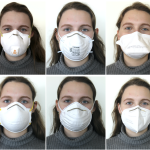A recent study of young, deceased athletes exposed to repeated head trauma revealed that 41% suffered severe Chronic Traumatic Encephalopathy (CTE), leading to their death or severe neuropsychological damage. If serious sports injuries are so prevalent, why aren’t we banning the ball?
Harm Reduction
Is there anything more annoying than walking into a hotel room and seeing the signs to “Save the Environment” by not having the hotel wash your dirty towels? Why should you feel guilty about wanting clean towels after paying high prices for the privilege of staying at their establishment? This was the very situation that led to an essay in 1986 in which the term greenwashing was used for the first time.
Remember the Marshmallow experiment? That's the one to see how long a child could hold out against the temptation to eat a marshmallow, correlated with an enhanced ability at delayed gratification and later adult success. A new study looks at children with different behaviors, oppositional and antisocial. How did they fare?
My background is in public health, and I love the idea of making healthcare accessible for everyone, but health coaching, exemplified by the Institute for Integrative Nutrition (IIN), in its current state, is not healthcare. It’s the Wild West of healthcare, and we need a sheriff.
If you’ve been following the news, you’ll have noticed that Japan started discharging its tritiated water into the ocean last week, over the objections of China and South Korea and with the concurrence of the International Atomic Energy Agency. I noticed there were a few comments on my recent ACSH piece on this matter and thought I’d address a few of the points raised in the comments.
Evidence-based medicine specifically seeks evidence for treatments, recommendations, and practice guidelines. However, while the spirit of evidence-based medicine is to be based on ethical and scientifically rigorous research, in practice, it is often simply shortened to “Is there any evidence at all?”
A new study suggests that 25% of “marginalized” patients – Black, Hispanic, or insured by Medicaid – were “jumped over” by the less ill, or those arriving later in emergency departments. Are these disparities the result of the social construct of race? Could it be a “racism or classism” of institutions or personnel? Or could the term disparity be used to by authors to jump the publication line – to sooner rather than later?
As fewer individuals pick up cigarettes, more are picking up vape cartridges. Over time, some smokers move on to vaping, while some vapers move on to smoking; the gate swings in both directions. Does perhaps the gate swing more one way or another? Authors of a new study offer what they've learned.
It is seemingly such an easy question: if I need an ambulance, what will it cost me? Unfortunately, there's only a complex answer, summarized as “it depends.”
Masking to prevent COVID infections has diminished drastically, even in healthcare settings, and there are already examples of its negative effects. Across-the-board abandonment of masking is premature: It is effective, inexpensive, not terribly inconvenient, and applicable to preventing airborne and droplet-spread infections in addition to COVID. Most important, it is in the best interest of staff, patients, and public health.
One of the judgments made by scientists is how to aggregate or segregate data – especially when it comes to changing a continuous variable like age – into separate bins (10 to 18, 19 to 34, etc.). Race/ethnicity as a category has come in for some well-deserved criticism. Leave aside the argument that it is a social construct, race/ethnicity contains too many confounding features. A study in Nature points to a new way to break the category into meaningful segments.
Earlier this month, the headline “New Study Finds PFAS 'Forever Chemicals' in Drinking Water from 45% of Faucets Across US” led many news reports. That's after 32 individual PFAS were tested and found in both private and public water supplies, presenting potential hazards to our nation’s health. What did the study really say?











